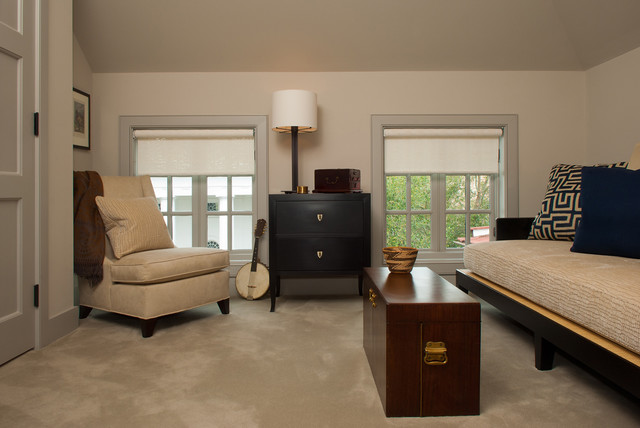Tuesday, April 12, 2011
by Tom Stachler,ABR,CDPE - Group One Realty Team
On today’s market, every savvy seller wants to know what turns buyers off, so they can get their homes sold as quickly as possible, for as much as possible. But buyers, take note – there is a minefield of seller turn-offs you can trigger that potentially could keep you from getting the Home you want at the best price and terms, or to unnecessarily complicate dealings with your home’s seller.
Lest you think all of today’s sellers are under the gun and will just put up with whatever behavior buyers dish out, be aware that there are still many multiple offer situations in which buyers must compete with each other to get a home – buyers who trigger these turnoffs tend to lose in those scenarios. Also, avoiding these seller turnoffs can create a transactional environment of cooperation and avoid things turning adversarial. That, in turn, can empower you to land a better price, get extra items you want thrown into the deal, and even negotiate more flexibility around your escrow and move-in timelines – all perks that can make your life easier and your budget go further.
For sellers, these turnoffs have the potential of irritating you out of an otherwise good deal – maybe even the only deal you have!
Here’s a few of the most common buyer-perpetuated seller turnoffs, with tips for sellers on how to keep an emotional (and economic) even keel, even if your home’s buyer makes some of these waves:
1. Trash-talking. Trash-talkers are the home buyers who think they’re going to negotiate the list price down by slamming the house, telling the sellers how little it is really worth, how the house across the street sold for nothing, why the school on the corner should make them desperate to give the place away, etc. This strategy never works; in fact, when you attack a seller and their home, you only cause them to be defensive, and think up all the reasons that (a) their home is not what you say it is, and (b) they shouldn’t sell their home to you!
Sometimes this happens with buyers who actually love a house and just walk around it fantasizing about all the ways they would customize it to their tastes while a seller is there. Sellers: avoid being at home while your home is being shown. Buyers: save your commentary for your agent; if you do encounter the seller in person keep your conversation respectful and avoid critiquing the house or the list price.
2. Being unqualified for mortgage financing. When a seller signs a buyer’s offer, most often the seller agrees to effectively pull the home off the market, forgoing other buyers who might be interested. As such, the only thing worse than getting no offers on your home is getting an offer, getting into contract, then having the whole thing fall apart when the buyer’s loan falls through – especially if that could have been predicted or avoided up front.
Sellers: Should work with us or your listing agent to vet your home’s buyers’ qualifications, including their loan approval, down payment and earnest money deposit – before you sign a contract. It’s not overkill for your agent to call the buyers’ mortgage pro before you sign the contract and get a level of comfort for how robust their qualifications are. Buyers: Get pre-approved. Seriously, this should be the first thing you do BEFORE looking at homes to better determine what price home you are pre-qualified for. And make sure that you don’t buy a car, quit your job, deposit lottery winnings or do any other financial twitchery between the time you get loan approval and the time you close escrow on your home.
3. Making unjustified lowball offers. No one likes to feel like they are being taken advantage of. And sellers generally know the general ballpark amount that their home is worth, as well as what they need to sell it for to get their mortgage paid off. Yes – the price you pay for a home should be driven by its fair market value, rather than the seller’s financial needs, and deals are often available in a market like the current one, in which supply so vastly outpaces demand. But just throwing uber-lowball offers out at sellers hoping one will hit the spot is not generally a successful strategy, especially if you really, really want a given property. If you are going to be making a mortgage payment, it should be for a home that was at the top of your favorites list.
Sellers: Don’t get overly emotional about receiving a lowball offer; counter at the price you decide makes sense based on the total circumstances, including your motivation level, recent comps and the interest/activity level your listing is receiving. Buyers: Work through the similar, nearby homes that have recently sold (a/k/a comparables that we can prepare for you) before you make an offer to factor the home’s fair market value into your offer price – also factor in how much you want the place, too. Don’t be amazed if you make an offer far below asking, and don’t get a response.
4. Renegotiating mid-stream. Sellers plan their finances, moves and - to some extent – their lives around the purchase price a buyer agrees to pay for their home. If you get into contract to buy a home, and find out during inspections that costly repairs need to be made, then propose a lower sale price, repair credit or even actual repairs to the seller, that’s sensible and fair. But if you were aware that the property needed a lot of work before you made an offer on it, then you come back asking for a beaucoup bucks’ worth of credit or price reductions midstream, expect the seller to cry foul. And holding the seller up two weeks into the transaction because you caught a case of buyer's remorse? Not cool, and not likely to foster the spirit of cooperation you may need to get your deal closed. Buyers should remember too that no home is perfect and most will need common repairs or upgrades that you will assume or take responsibility for. Your inspection is looking for expensive or surprising things that you hadn't counted on.
Sellers: avoid mid-stream price renegotiations by having a full set of inspection reports and repair bids at hand when you list your home. Buyers: try to avoid renegotiating the entire deal unless you get some major surprises at your inspections or inflating small repairs to try to justify a major price cut.
5. Misleading or setting the seller up. Remember when we talked about buyer turn-offs? Being misled by listing photos or very fluffy property descriptions was high on the list. The same goes for sellers. Offering way over asking with the plan to hammer the seller for a reduction when the house doesn’t appraise at the purchase price? #LAME Making an as-is offer planning the whole time to come back and ask for every penny ante repair called out by the inspectors? Lame squared.
Sellers: If you get multiple offers and are tempted to take a sky-high one or one that claims to be all cash, consider requesting proof that the buyer has sufficient funds to make up the difference between what you think the home will appraise for and the actual sale price, and statements showing the cash truly exists. Buyers: Don’t be lame. I’m not saying you have to tell the seller exactly what your top dollar is, but making offers with terms designed to intentionally mislead is really, really bad form – and can result in losing the home entirely if and when your bluff gets called. Of course we can help you through every step of the way, so no worries. You can get started by clicking here to view all available Ann Arbor Real Estate listings for sale.










